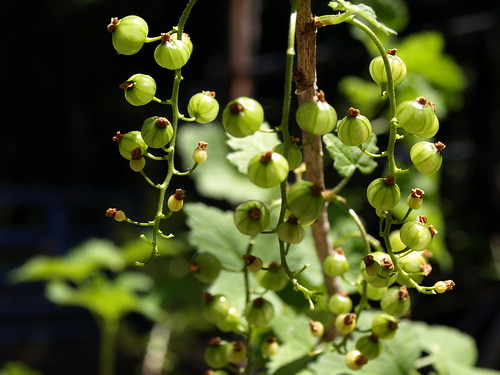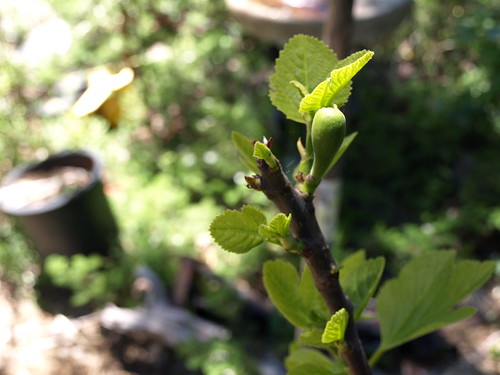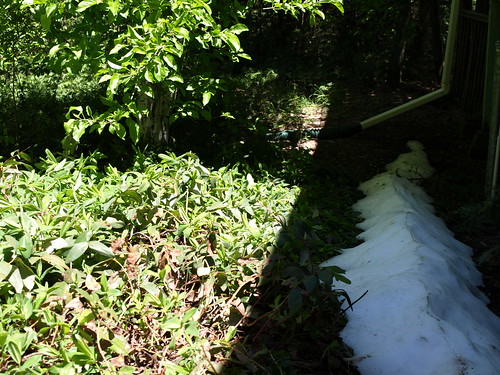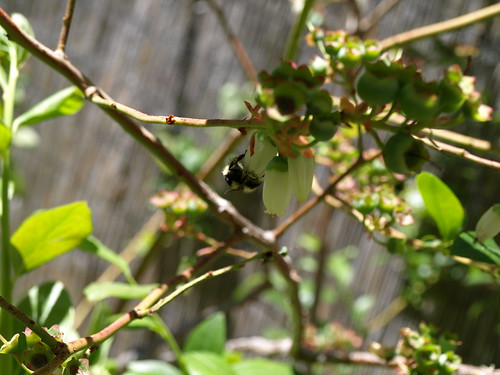Let me introduce my garden, which is situated in northern California, in the foothills of the Sierra Nevada (El Dorado County), at 3000 feet above sea level. In Sunset Western Garden climate zone terms, the garden is in Zone 7 – California’s Gray Pine Belt, Oregon’s Rogue River Valley, and Southern California Mountains. What that means in practical terms is that there’s snow – up to a foot or two at a time – every year, plus lots of winter rain, followed by fairly short, fairly hot and dry summers. The garden proper is ~2500 sq. ft. within a larger, well-forested 3.23 acre property. Native trees include the Pacific Madrone, California Incense-cedar, deciduous and evergreen oaks, dogwood, and assorted pines. Shrubs and ground covers include Manzanita (in the sunnier spots), invasive-but-cheerful Scotch Broom, and mountain misery. The native soil is in the Aiken Loam series (basically reddish clay loam) that can be a wee bit difficult to work, requiring lots of amendment (compost) and lots of mulch.
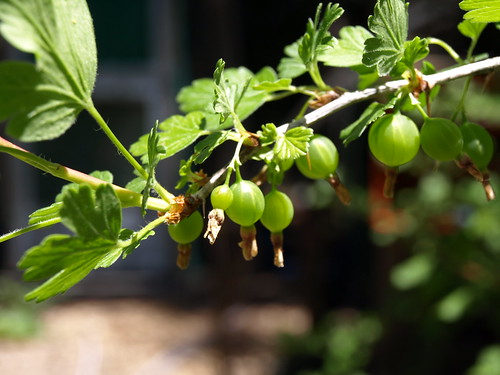
The garden itself contains lots of edible perennial fruits and vegetables (gooseberry, red and black currants, jostaberry, rhubarb, asparagus, Grecian bay laurel, kiwi, various table grapes, lingonberry, huckleberry, blueberry, cranberry, raspberry, feijoa, pomegranate, artichoke, cardoon, hops, viburnum, elderberry, aronia, goji berry, fig, olive and strawberry), perennial and reseeding annual herbs (rosemary, bee balm, lemon balm, mint, self-heal, sorrel, lovage, lavender, thyme, chives, stevia, oregano), and an annual plot for spring/summer and fall/winter vegetables (the usual suspects, plus a few unusual ones). I have a few very mature fruit trees – pear, apple, cherry, plum, and persimmon – and recently planted a peach and nectarine. I’m in the early stages of a long-term project to integrate various food plants into the forested areas surrounding the garden.

I suppose I should introduce myself. My name is Zack, and I’m an El Dorado County Master Gardener. It feels goofy to say that, as I don’t consider myself a “master” at gardening. I am, however, a persistent gardener, and I teach public education classes about vegetable gardening in the foothills. I started this blog partly to document an edible forest garden project currently in process, partly because I was so inspired by the lush and beautiful gardens of Vancouver (I’m looking at you @keiramc and @draggin), and partly because I am not very diligent when it comes to keeping paper records of my gardening efforts, and I hope to do a better job here. I love gardening, and talking about gardening, and taking pictures of plants, and sharing stories with other gardeners. I hope to do three out of four here.

